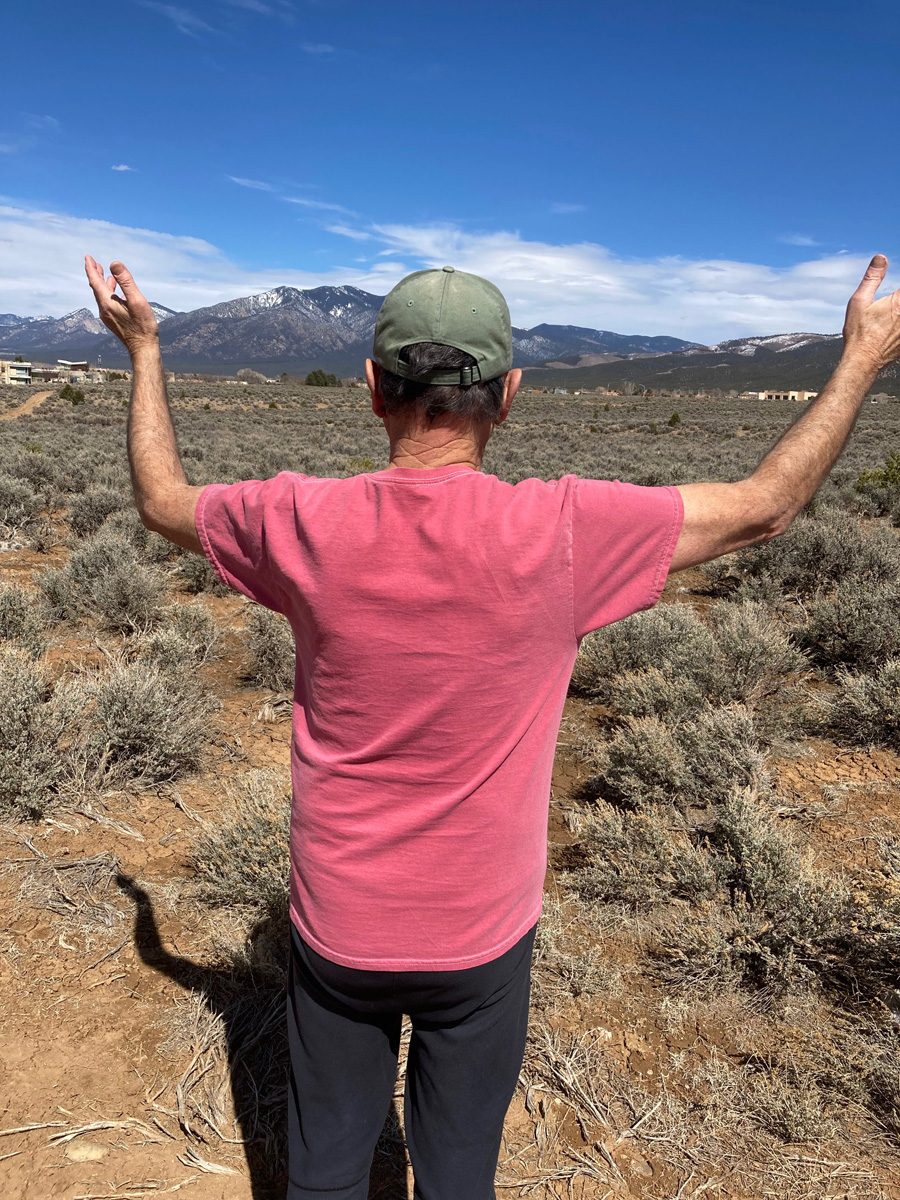When I look back at the places I’ve lived over the past 70 years—California, Oregon, and New Mexico—each place has had its own underlying tone, revealing itself to me in the form of a lesson, a way of being in the world, that I needed very much to learn.
As Sharon Blackie writes in her Facebook group The Mythic Imagination, “There are various instruments that play their part in fashioning the song of each place: geology, flora, fauna, weather, the skyscape, topography, folkloric and mythical beings and motifs, stories told by its human inhabitants… some bright and upbeat; others discordant, heavy—but they lodge right in the heart of you anyway.”
I’m still learning the song of Taos County. Perhaps it’s the fabled “Taos Hum,” but the allure is much deeper.
In Sharon Blackie’s book, The Enchanted Life, she writes, “We think that we imagine the land, but perhaps the land imagines us, and in its imaginings, it shapes us. The exterior landscape interacts with our interior landscape, and in the resulting entanglements, we become something more than we otherwise could ever hope to be.”
Something about her statement rings true for me: the Taos area drew me and my husband to this land, not to impose my interior landscape upon it, but rather to interact with my interior landscape, and in that process, we both have changed.
My husband told me recently of a conversation he had with a Taos Pueblo friend who was hiking in the Weimer foothills, east of Taos. He was approached by a sheriff who asked what he was doing there. It occurred to the Native man that someone had been alarmed at his presence and reported him. He commented, “They moved here and they don’t know where they are.”
Where they are, where I am, is on ancient Pueblo Indian land. I am a visitor. Not all immigrants to this land understand where they are. I try to listen to the tones of this place, to be impacted by its mystery, by the mountain, by the land, by the gorge that splits the valley in half.
Long-time Hispanic residents speak of querencia, the love of the land that nurtures and changes us so that we become more than we were when we arrived. Some newcomers make no attempt to adapt to this place, but rather try to make it into something they are familiar with. While I also bring my expectations and privileges to my life here, I also wish to allow the land to change me by “lodging in my heart.”
Those who made the Taos area their home decades ago also feel the pull of the land which has shaped them according to the hum of the mountain, the pulse of the Rio Grande, the clarity of the sky, the rich cultural heritage of the indigenous past and the colonial and Hispanic presence superimposed over its ancient being.
What is the allure of Taos? May the song of this place work its magic to impact every newcomer like myself to learn to love this land and allow its nature to change us. I am humbled and honored to begin to know where I am, living in this magnificent valley.
Julian Spalding is a 45+ year resident of New Mexico and a three-year resident of Taos. He lived in Taos County in the early 1970s and returned in 2018. He is the former publisher of Albuquerque Arts magazine and is retired from a career in publishing, writing, and advertising. Julian’s work has previously been published in the Questa Del Rio News.



